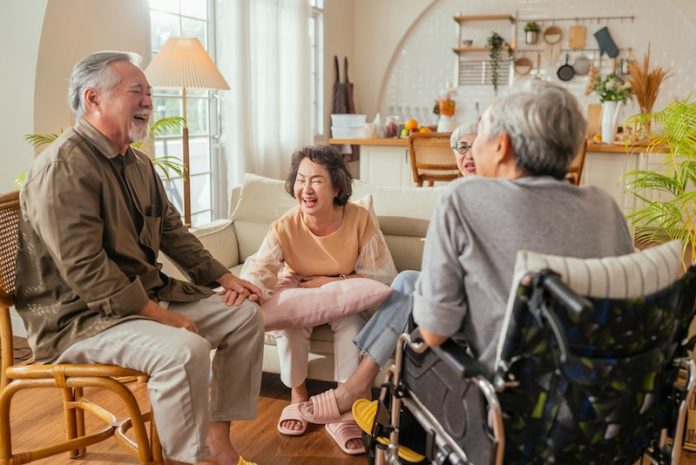
Dementia is a condition that affects memory, thinking, and behavior, making it challenging for those diagnosed to navigate daily life safely.
Creating a safe home environment is essential for ensuring the well-being of people with dementia. Here are some practical tips and the research behind them, presented in easy-to-understand language.
One of the first steps in making a home safe for someone with dementia is to reduce the risk of falls. Falls are a common and serious concern because they can lead to injuries and hospitalization.
To minimize this risk, remove tripping hazards like loose rugs, electrical cords, and clutter from walkways. Installing handrails in hallways and grab bars in bathrooms can provide extra support. Research shows that these modifications significantly reduce the likelihood of falls.
Good lighting is crucial for preventing accidents. People with dementia may have vision problems or become easily disoriented in dimly lit spaces. Ensure that all areas of the home, including stairways, are well-lit.
Nightlights in bedrooms, hallways, and bathrooms can help guide them during nighttime trips. Studies have found that adequate lighting can improve safety and reduce confusion for those with dementia.
Simple changes in the bathroom can make a big difference. Installing non-slip mats in the shower and bathtub, and using a shower chair, can help prevent slips and falls.
Lever handles on faucets and doors are easier to use than traditional knobs. Research indicates that these modifications help maintain independence and safety in the bathroom.
The kitchen can be a particularly hazardous area. To prevent accidents, keep sharp objects like knives and scissors out of reach or in locked drawers. Appliances with automatic shut-off features, such as kettles and stoves, can prevent fires and burns.
Labeling cabinets with pictures or words can help those with dementia find items without frustration. Studies show that these measures reduce the risk of injury and make the kitchen a safer place.
Creating a calm and organized environment can help reduce confusion and agitation. Minimize background noise from televisions, radios, and other devices, as too much noise can be overwhelming.
Keep the home tidy and free of clutter, and organize personal items in a consistent manner. Research supports that a calm and orderly environment can improve mood and cognitive function in people with dementia.
Safety locks on doors and windows are essential to prevent wandering, a common behavior in people with dementia. Consider installing locks that are difficult to open or placing them high or low on doors where they are less noticeable.
Door alarms and motion sensors can alert caregivers if the person tries to leave. Studies show that these precautions can significantly reduce the risk of wandering and ensure the person’s safety.
It’s also important to manage medications safely. Using a pill organizer and setting reminders for medication times can help ensure that medications are taken correctly. Keep all medications, cleaning supplies, and toxic substances locked away to prevent accidental ingestion.
Research highlights the importance of medication management in preventing health complications and ensuring the safety of people with dementia.
Providing familiar and comforting items can help reduce anxiety. Displaying family photos, favorite books, and cherished possessions can provide comfort and a sense of identity.
Keeping a routine and providing clear, simple instructions can also help manage daily activities. Studies suggest that familiar items and routines can enhance emotional well-being and reduce confusion.
Finally, involving family members and caregivers in creating and maintaining a safe environment is crucial. Regular communication and collaboration can ensure that everyone is aware of the safety measures in place and any changes in the person’s condition.
Research emphasizes the importance of a supportive network in managing dementia effectively.
In summary, creating a safe home environment for people with dementia involves reducing fall risks, ensuring good lighting, making bathroom and kitchen modifications, creating a calm atmosphere, preventing wandering, managing medications, and providing familiar items.
These steps, supported by research, can significantly improve the quality of life and safety for those with dementia. By making thoughtful adjustments and involving caregivers, a safer and more supportive home environment can be achieved.
If you care about dementia, please read studies about Vitamin B9 deficiency linked to higher dementia risk, and flavonoid-rich foods could help prevent dementia.
For more information about brain health, please see recent studies that cranberries could help boost memory, and how alcohol, coffee and tea intake influence cognitive decline.
Copyright © 2024 Knowridge Science Report. All rights reserved.



